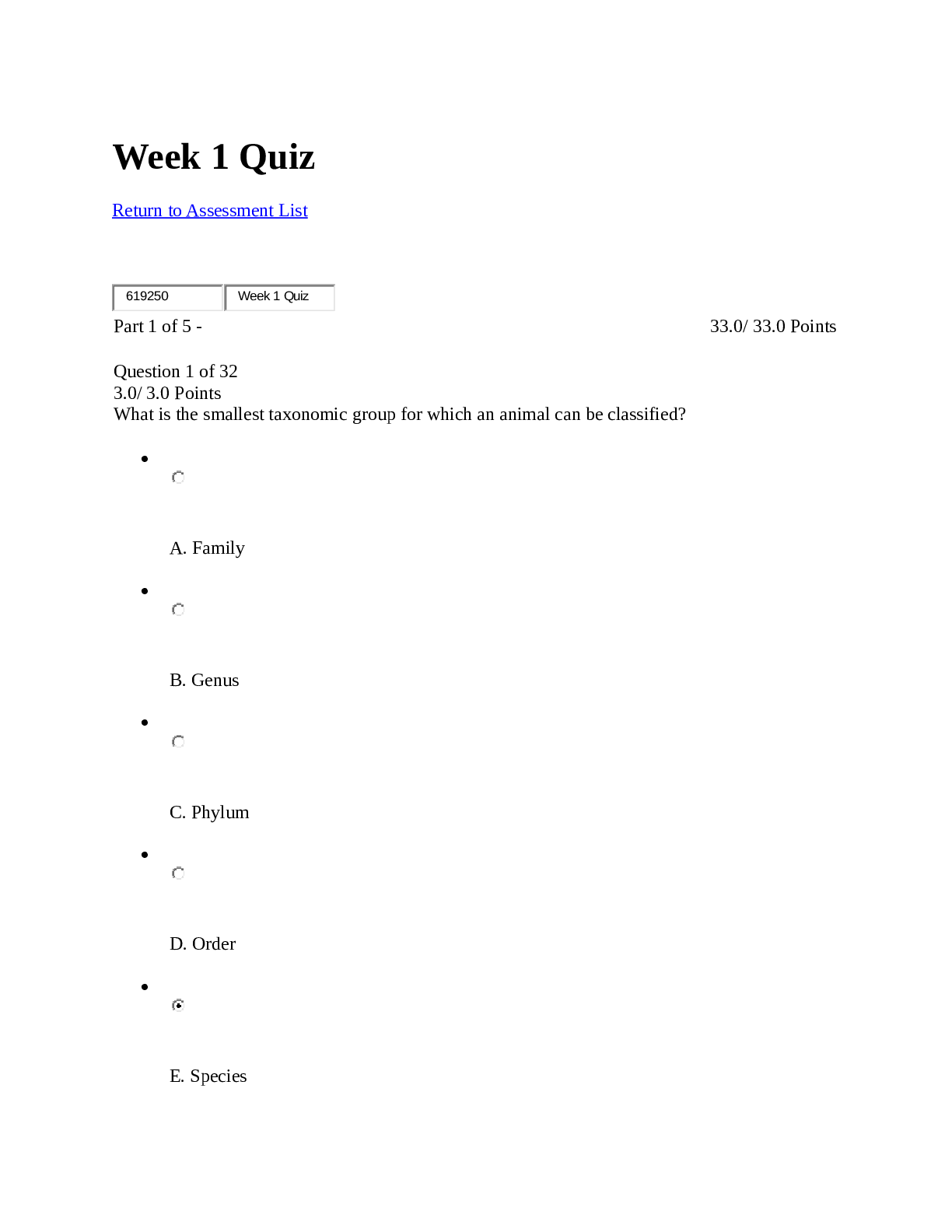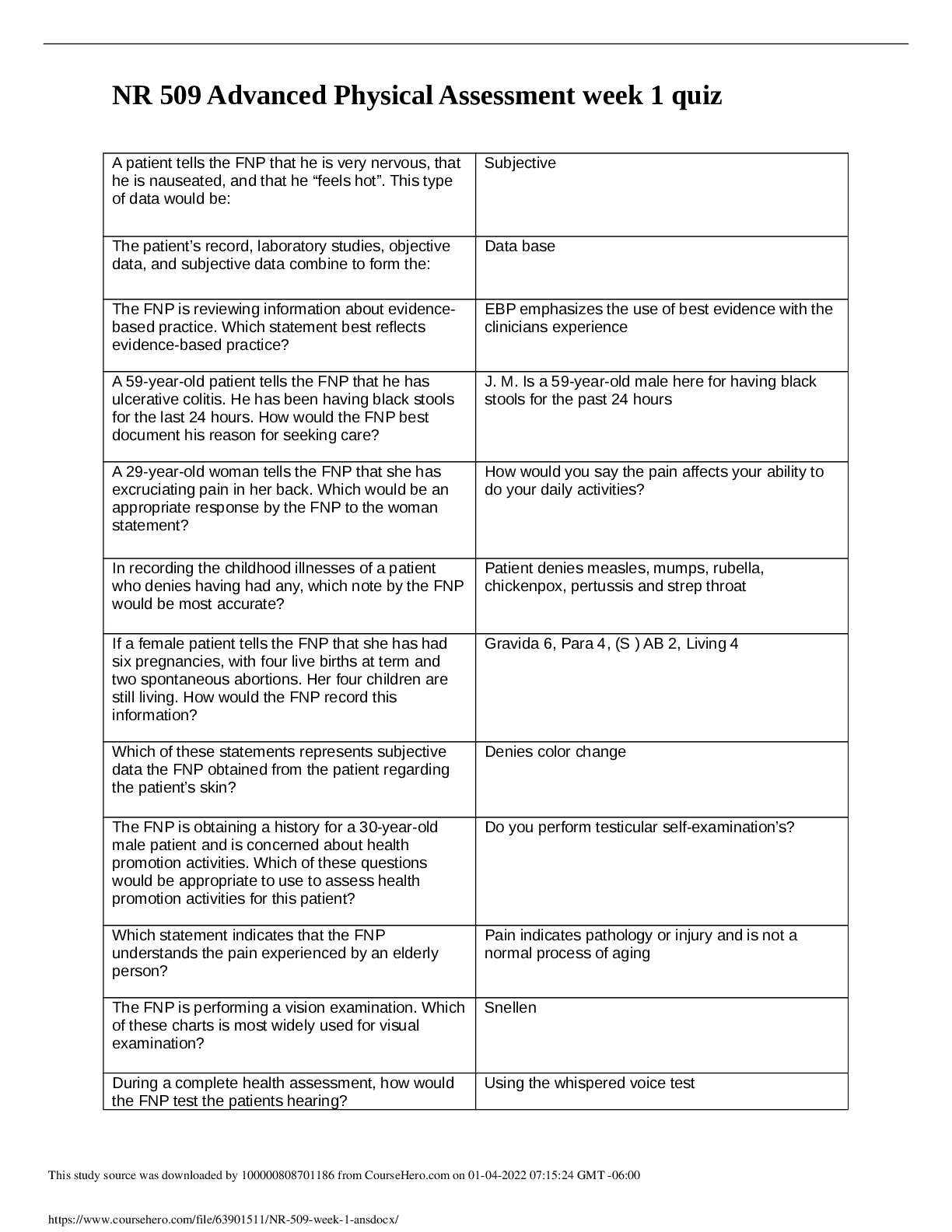Health Care > EXAM > HSM 543 Week 1 Quiz (Fall 2018-19) | Highly RATED Paper | Download To SCore An A (All)
HSM 543 Week 1 Quiz (Fall 2018-19) | Highly RATED Paper | Download To SCore An A
Document Content and Description Below
HSM 543 Week 1 Quiz Week 1 Quiz 1. Question : (TCO A) The purpose of financial accounting is to provide information to . Student Answer: external users lenders suppliers the... government All of the above Instructor Explanation: See Chapter 1, page 5. Points Received: 5 of 5 Comments: Question 2. Question : (TCO A) The most important objective of healthcare financial management is to . Student Answer: determine the tax status of the organization improve the marketing budget generate a reasonable net income follow accounting rules and regulations Instructor Explanation: See Chapter 1, page 7. Points Received: 0 of 5 Comments: See Chapter 1, page 7. Question 3. Question : (TCO B) The rationale for having tax exempt organizations is the fact that . Student Answer: the economy still benefits from jobs generated and payroll taxes paid there are local real estate taxes collected from the organization the organization is actually relieving the government of the burden of providing the services All of the above None of the above Instructor Explanation: See Nowicki, page 45. Points Received: 5 of 5 Comments: Question 4. Question : (TCO A) Some of the identified CFO leadership skills include which of the following? Student Answer: Communicating clearly Providing leadership in day-to-day operations Managing resources and finances Creating a positive organizational culture All of the above Instructor Explanation: See Chapter 2, page 37. Points Received: 5 of 5 Comments: Week 2 Quiz 1. Question : (TCO C) Third-party payers include government and insurance company programs. In the mid-1940s, plans allowed employers and/or employees to prepay to an insurance company that would then reimburse a hospital or physician of the employee's choosing. These were called Student Answer: health maintenance organizations (HMO). welfare benefit plans. commercial indemnity plans. ( ) self-pay plan. multiple employer welfare associations. Instructor Explanation: See Nowicki, page 77. Points Received: 5 of 5 Comments: Question 2. Question : (TCO C) Managed care organizations (MCOs) do all the following except Student Answer: manage the cost of healthcare. manage the quality of healthcare. be called commercial indemnity plans. ( ) manage access to healthcare. Instructor Explanation: See Nowicki, page 79. Points Received: 0 of 5 Comments: See Nowicki, page 79. Question 3. Question : (TCO C) Which law established a physician fee schedule? Student Answer: Medicare Title XVIII OBRA ( ) TEFRA The Social Security Amendments of 1983 Instructor Explanation: See Nowicki, page 101. Points Received: 5 of 5 Comments: Question 4. Question : (TCO C) The objective of accounts receivable management should be to Student Answer: increase revenue through extending credit. allow patients to pay their medical bills over an extended time period. reduce the collection period. increase the days in A/R. Instructor Explanation: See Nowicki, page 214. Points Received: 5 of 5 Comments: Week 3 Quiz 1. Question : (TCO D) The current ratio is a Student Answer: basic indicator of financial liquidity or the ability to meet financial obligations. ( ) indicator of the long-term profitability of the organization. seldom used in the healthcare industry as opposed to other industries. calculation using the results of operations and the total assets on the balance sheet. ratio calculated from managerial accounting reports. Instructor Explanation: See Nowicki, page 208. Points Received: 5 of 5 Comments: Question 2. Question : (TCO D) Temporary working capital is Student Answer: not needed if the firm has a permanent working capital. only used by nonprofit organizations. less expensive than permanent working capital. is the additional working capital needed to respond to seasonal fluctuations. ( ) Instructor Explanation: See Nowicki, Chapter 8, page 100. Points Received: 5 of 5 Comments: Question 3. Question : (TCO D) Discuss how self-pay accounts should be handled as part of the organization's credit and collection policy. Student Answer: Organizations should set up an account for clients in which they allow for clients to pay a given dollar amount monthly. Individuals who are self pay, the organization needs to ensue that all the necessary paperwork is in place to ensure that they can cover themselves in the even that the customer becomes delinquent. Instructor Explanation: See Nowicki, pages 198 and 199. Self-pay should include provisions for financial counseling to determine how payment will be made. Counseling should include telling the patient about the organization's credit and collection policy and how they will pertain to this patient, investigating the credit history, and determining to what extent this patient can pay. The organization should help the patient evaluate alternative payment options such as credit cards, bank loans, or an extended payment plan. Points Received: 5 of 5 Comments: Question 4. Question : (TCO D) Discuss delinquency costs associated with accounts receivable. Student Answer: Delinquency costs are cost that are incurred when individuals as well has health insurance companies do that pay on time. When patient accounts become delinquent, organizations are now responsible for finding the funding that is necessary to pay the bills that are currently in place. Patient accounts being delinquent would lead to the organization being delinquent on their bills as well. Instructor Explanation: See Nowicki, Chapter 8, page 214. Delinquency costs associated with accounts receivable are the costs incurred by the organization for their patients or their payers not paying on time, during the organization's average payment cycle, or at all. Points Received: 5 of 5 Comments: Week 5 Quiz 1. Question : (TCO D) The difference between operating margin and total margin is which of the following? Student Answer: Operating margin does not indicate profitability from ongoing operations. Operating margin is operating income/total operating revenue. Total margin is gross profit/total revenue. ( ) One is a profitability ratio and the other is an efficiency ratio. Neither ratio is used by management or external users of financial statements. Both are operating indicators. Instructor Explanation: See Nowicki, page 306. Points Received: 0 of 5 Comments: Question 2. Question : (TCO D) Cash flows can be from operations, financing, or investing. Give an example of a transaction that would be included in each of those categories. Student Answer: Investment revenue would be included in all three categories. It is considered to be an operating activity that is on the income statement while at the same time it is both an investing and financing activity. Instructor Explanation: See Nowicki, page 302. Operating activity would be the collection from a customer. Investing would be the purchase of new equipment. Financing would be the payment of dividends. Points Received: 5 of 5 Comments: Question 3. Question : (TCO D) Discuss the role of explanatory notes. Student Answer: Explanatory notes explains the items that are located on the financial statements. The notes are there to explain the numbers that are located in the financial statement. Instructor Explanation: See Nowicki, page 298. Explanatory notes identify extraordinary events, as well as certain required provisions, and should be presented following the financial statements. Points Received: 3 of 5 Comments: See Nowicki, page 298. Explanatory notes identify extraordinary events, as well as certain required provisions, and should be presented following the financial statements. Question 4. Question : (TCO D) What is included in permanently restricted net assets? Student Answer: Assets that are donated and come with restrictions. Instructor Explanation: See Nowicki, page 298. Donor-restricted net assets with restrictions that never expire, such as endowment funds, is included. Points Received: 5 of 5 Comments: Week 6 Quiz 1. Question : (TCOs F and G) There are 10 LHIs (leading health indicators) that can significantly impact the amount of care we need and the intensity of that care. Describe two LHIs and how an individual can improve his or her ability to increase the quality and years of healthy life he or she will have. Student Answer: Physical activity: Regular physical activity throughout life is important for maintaining a healthy body, enhancing psychological well-being, and preventing premature death. An individual who takes physical activity seriously would experience a better quality of life and would not be prone to certain ailments. For one, individuals who exercise on a regular basis are less likely to have heart disease. Immunizations: Vaccines are among the greatest public health achievements of the 20th century. Immunizations can prevent disability and death from infectious diseases for individuals and can help control the spread of infections within communities. Individuals that are properly immunized a least likely to spread diseases and they are also not prone to contracting certain diseases. Instructor Explanation: See Nowicki, page 321. Efforts to increase physical activity and to eliminate tobacco use would be within the individual's control and would greatly impact his or her long-term health prospects. Improving environmental quality and getting immunizations would have the same impact. Almost any combination of the 10 would have some measurable amount of improvement. Points Received: 10 of 10 Comments: Question 2. Question : (TCOs F and G) Healthy People 2010 presented a strategic plan for health and identified specific responsibilities including the media's responsibility to improve health. Describe how the media impacts healthcare. Student Answer: Social media is one of the largest avenues in which information is shared. The media makes a huge impact on healthcare by sharing pertinent information. Individuals are able to learn about outbreaks and precautionary measures that can be taken via the media. The media is responsible for reaching as many individuals as possible may it be by television, radio, or over the internet. Instructor Explanation: See Nowicki, page 312. The media can contribute to the exchange of health information between health professionals and the public as well as among health professionals. In addition to news, health is an issue with characters and plots in entertainment programs that reach a wide part of the public. Points Received: 5 of 5 Comments: Question 3. Question : (TCOs F and G) What percent of total healthcare expenditure does local government account for? Student Answer: Instructor Explanation: 5.7% See Nowicki, page 323. They account for 13%. Points Received: 2 of 5 Comments: See Nowicki, page 323. They account for 13%. [Show More]
Last updated: 1 year ago
Preview 1 out of 16 pages
 (1).png)
Reviews( 0 )
Document information
Connected school, study & course
About the document
Uploaded On
Jan 04, 2022
Number of pages
16
Written in
Additional information
This document has been written for:
Uploaded
Jan 04, 2022
Downloads
0
Views
24



.png)










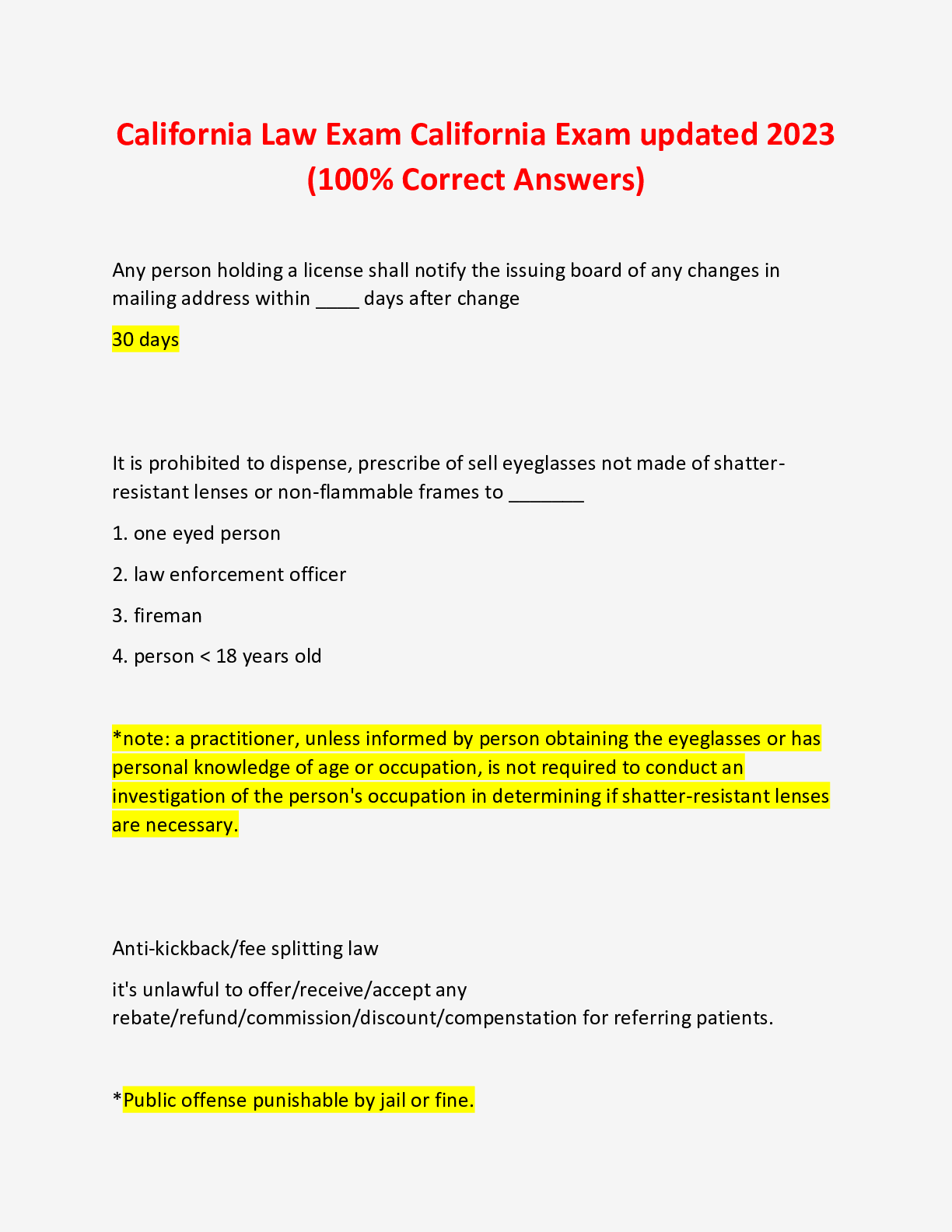




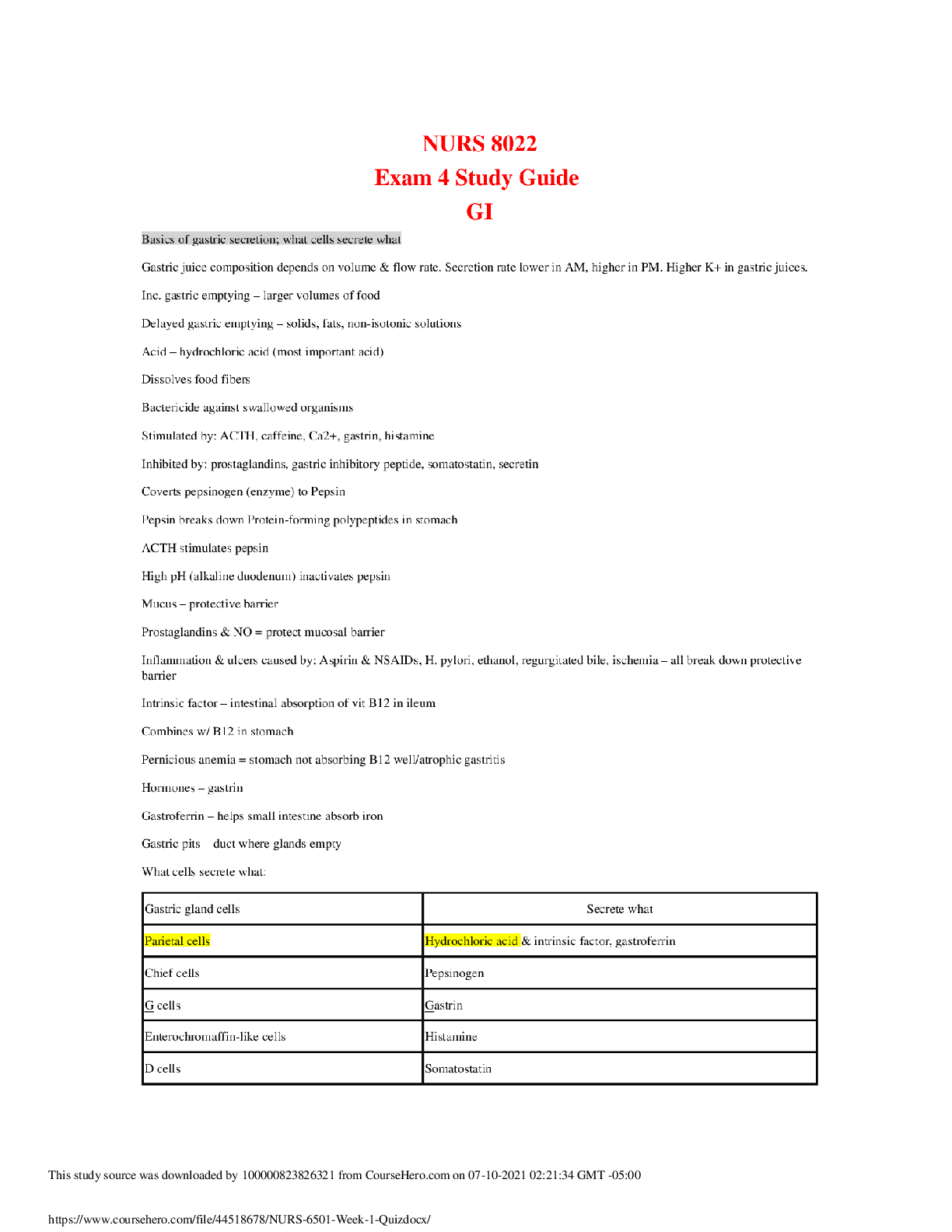
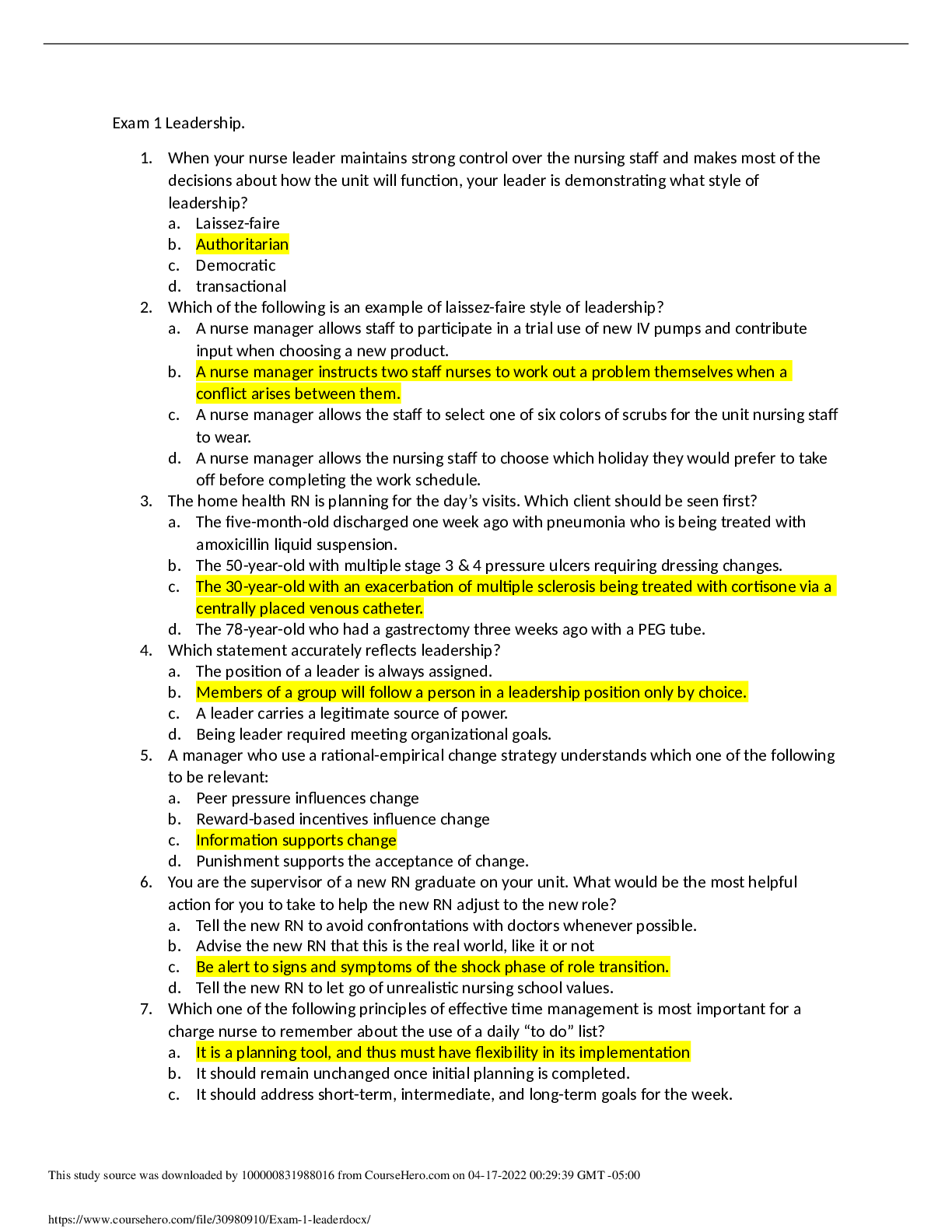
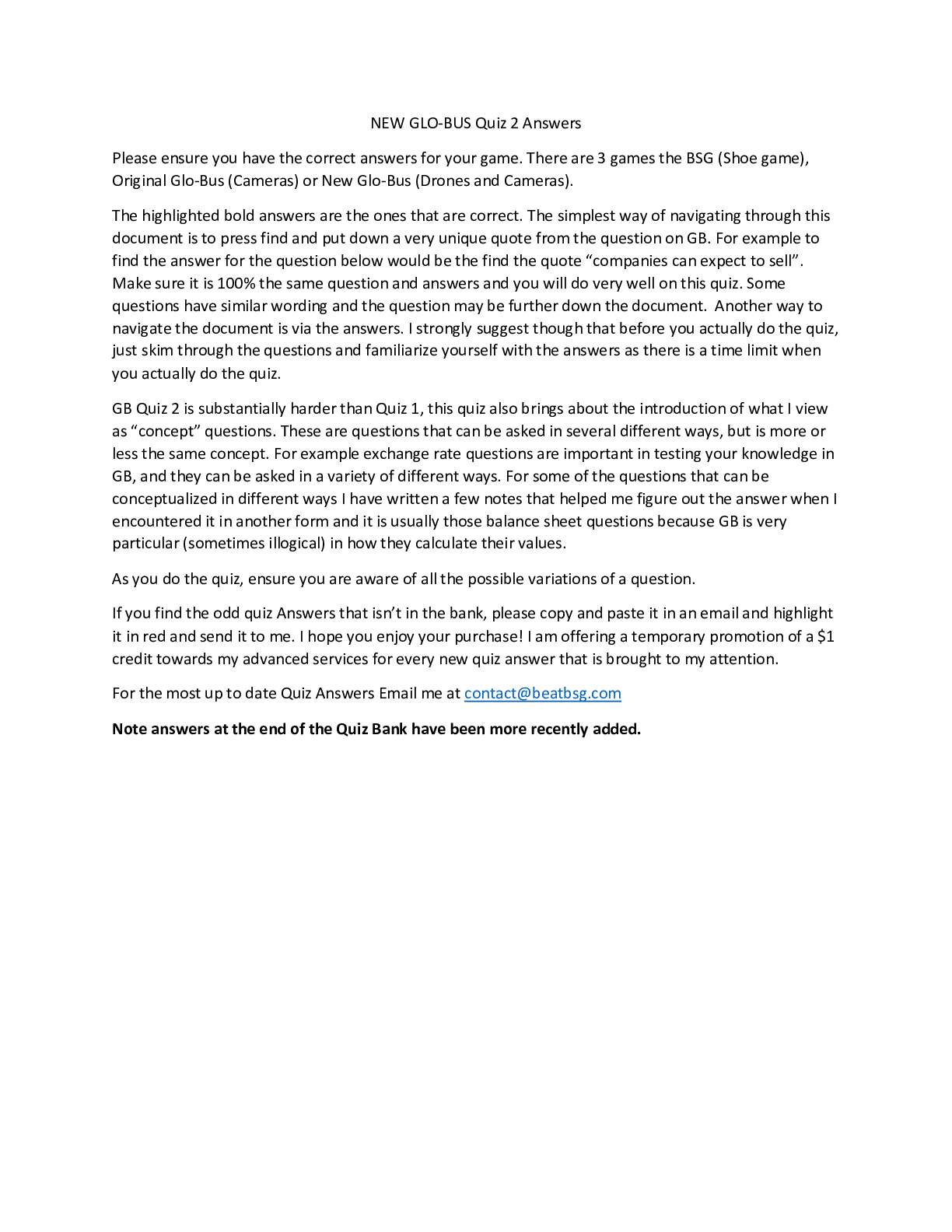
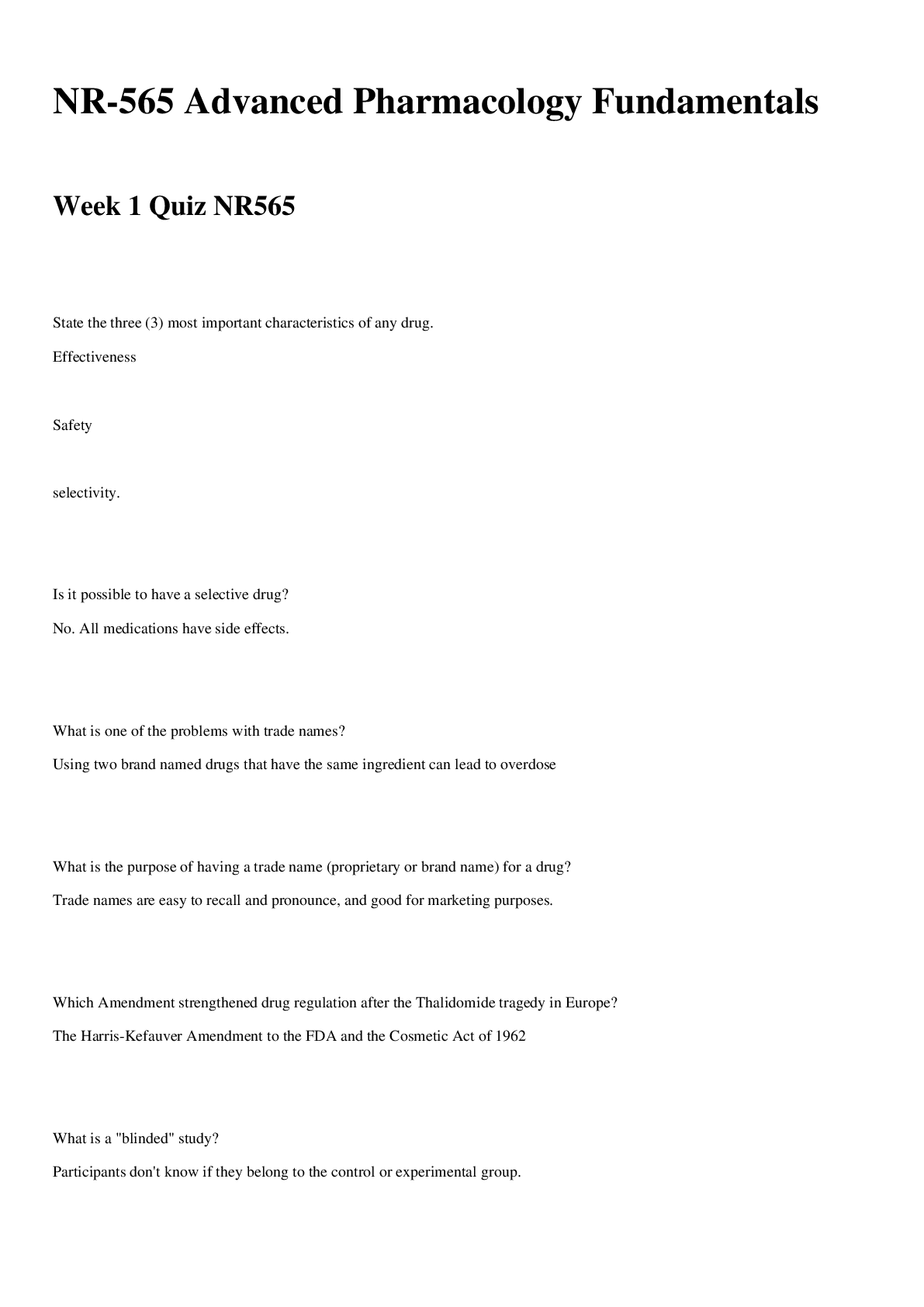
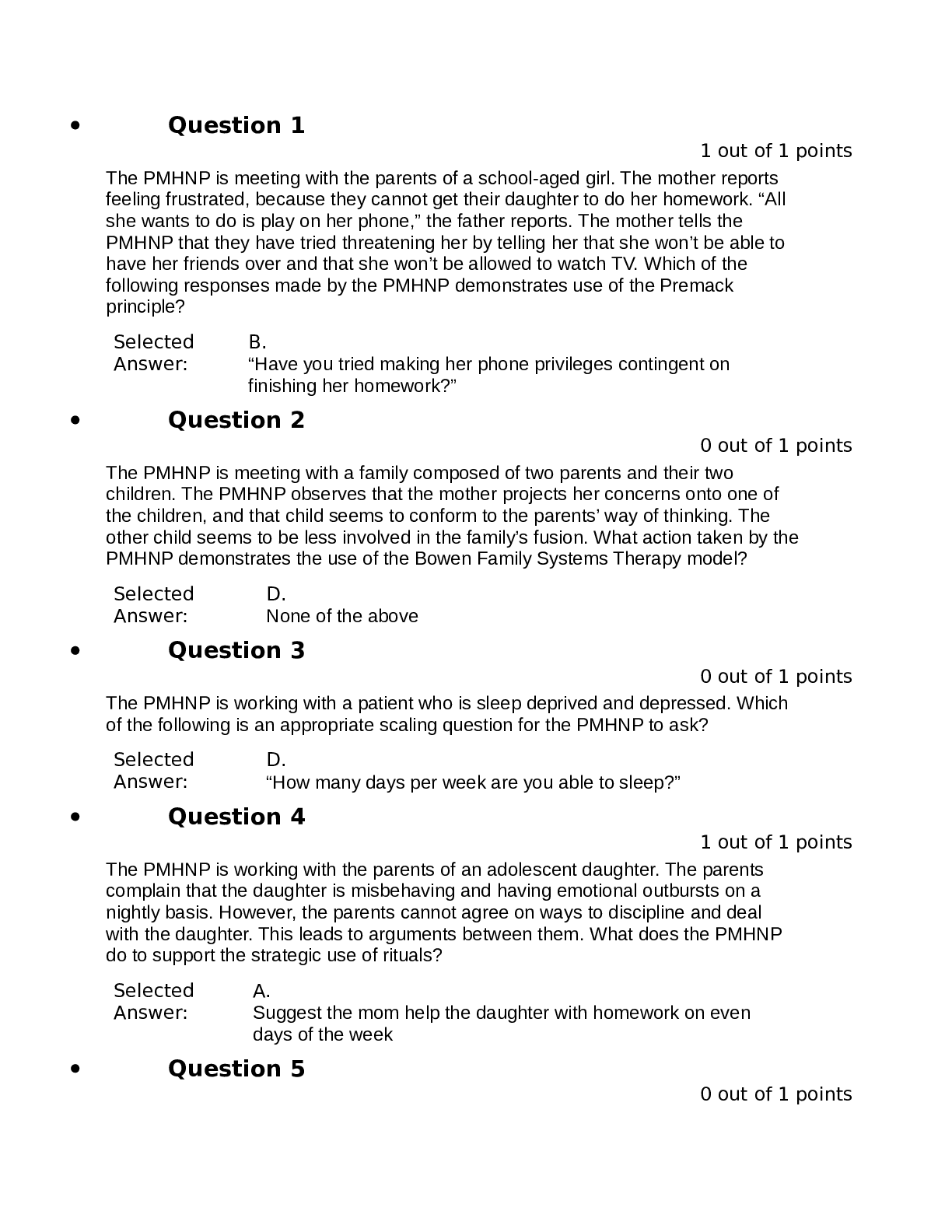
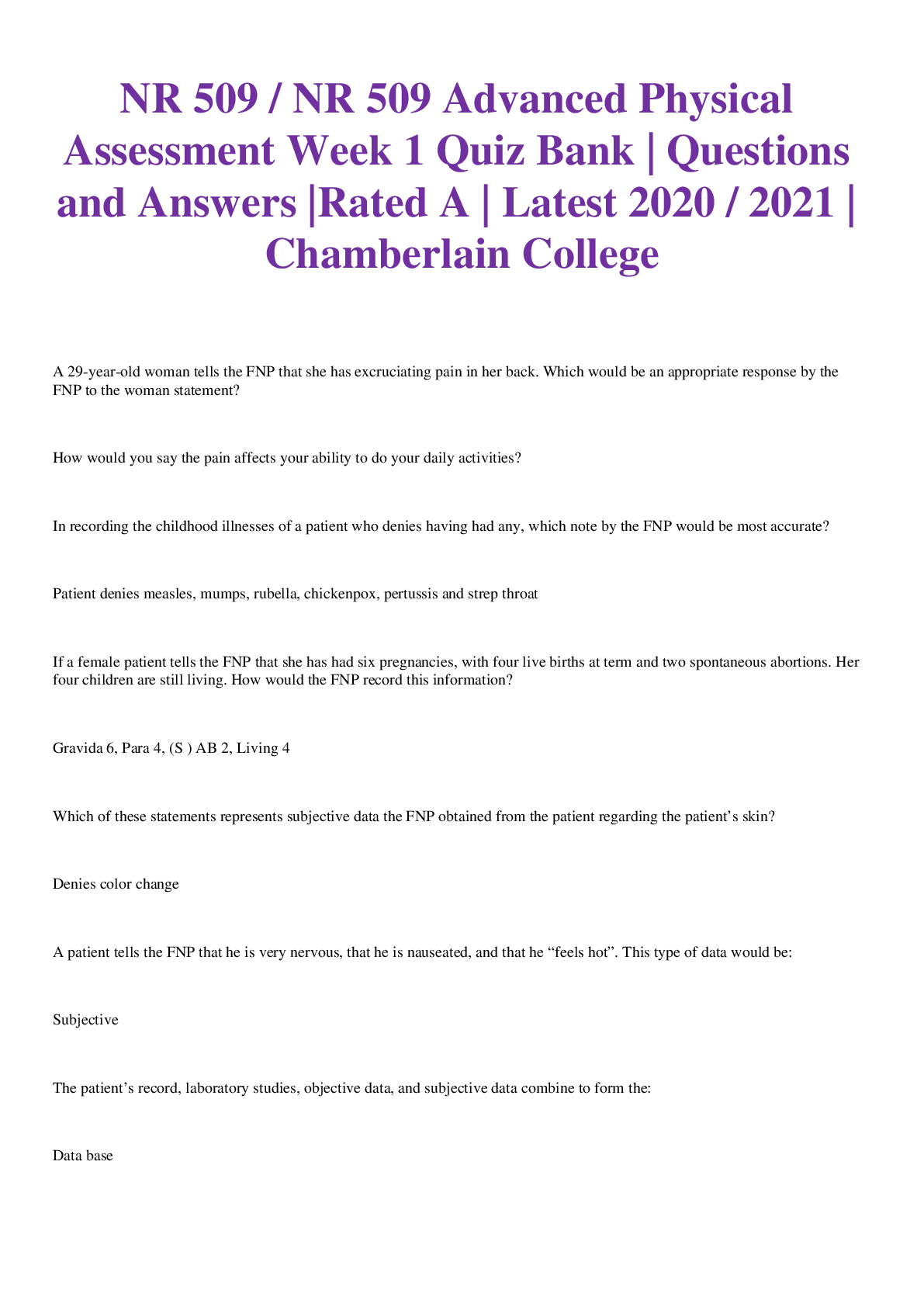
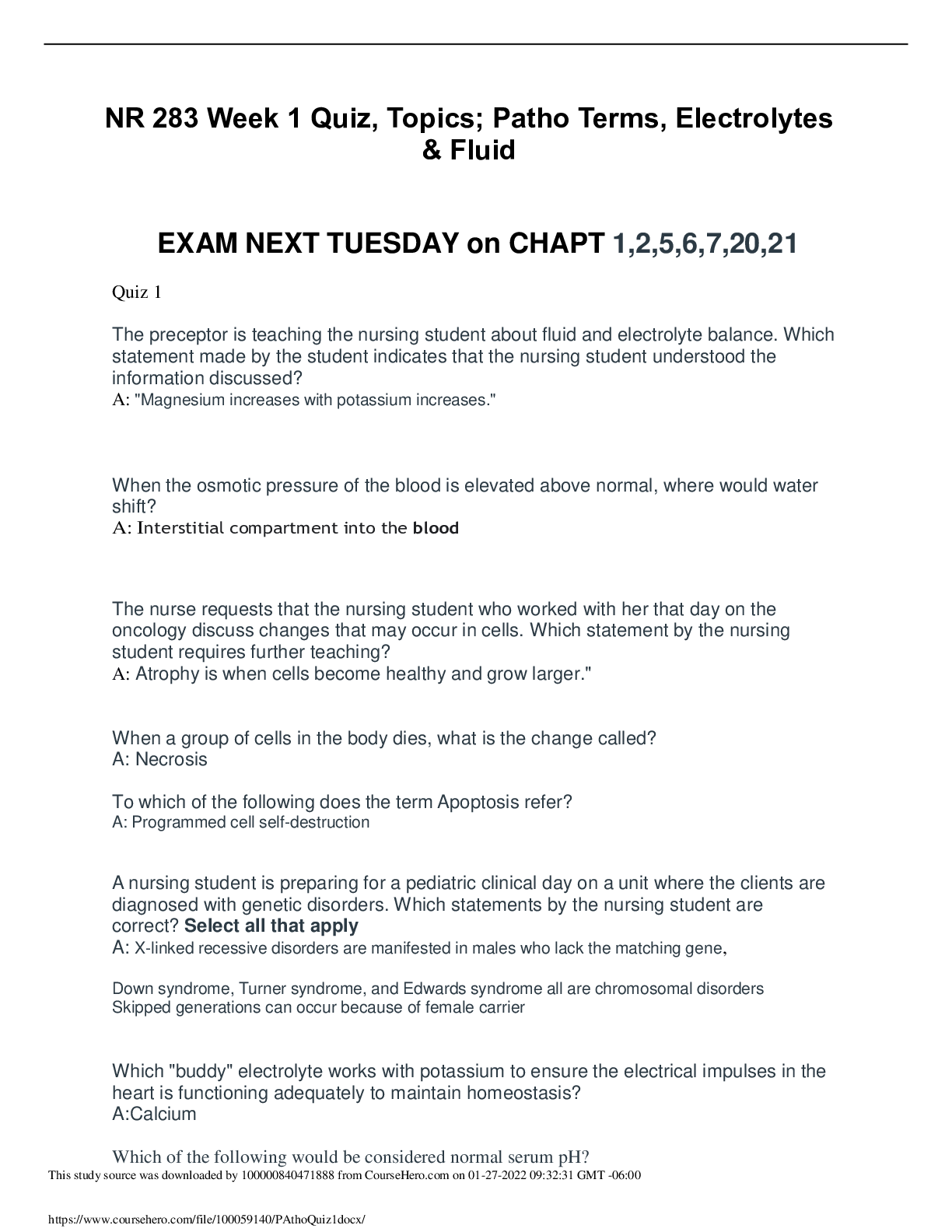

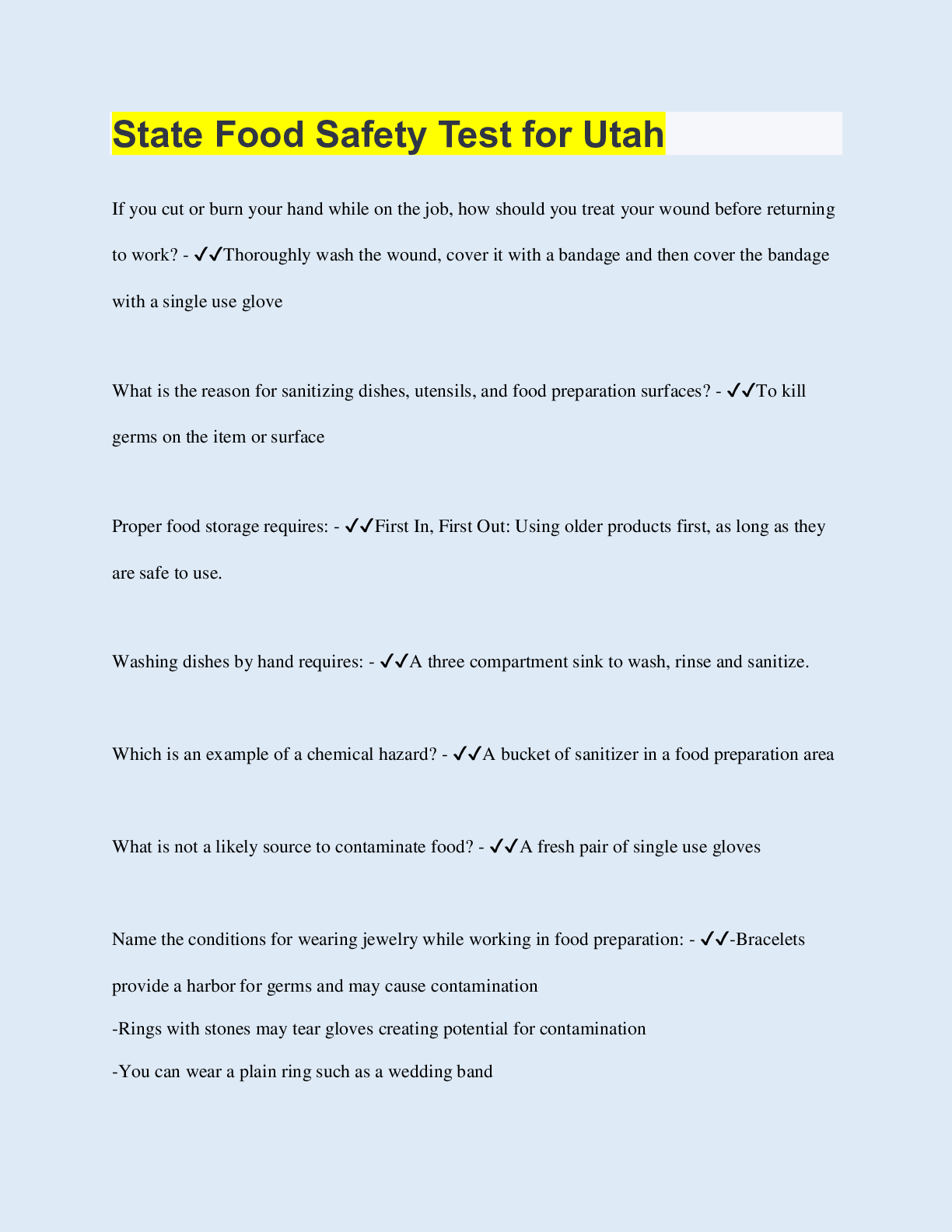
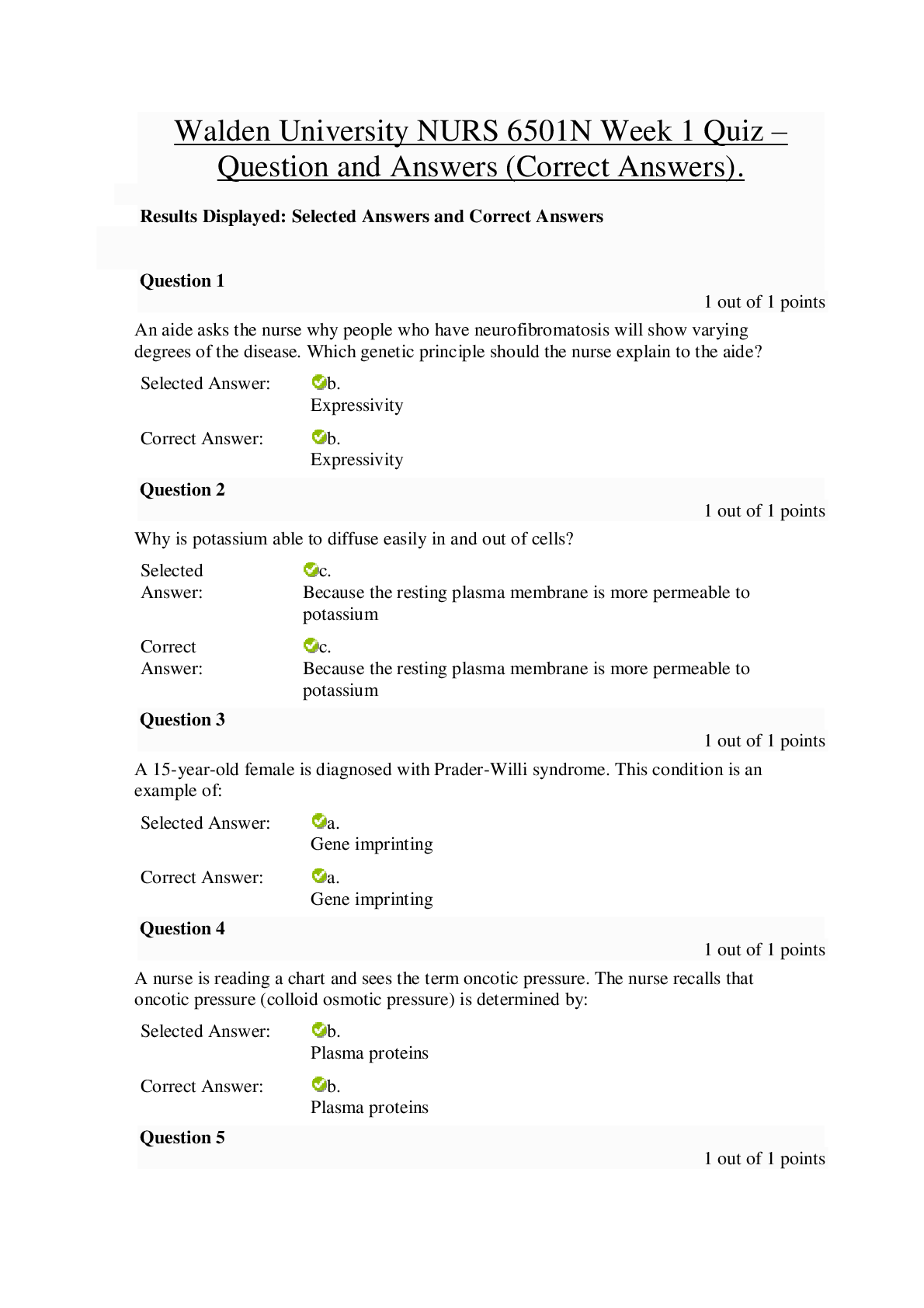
.png)
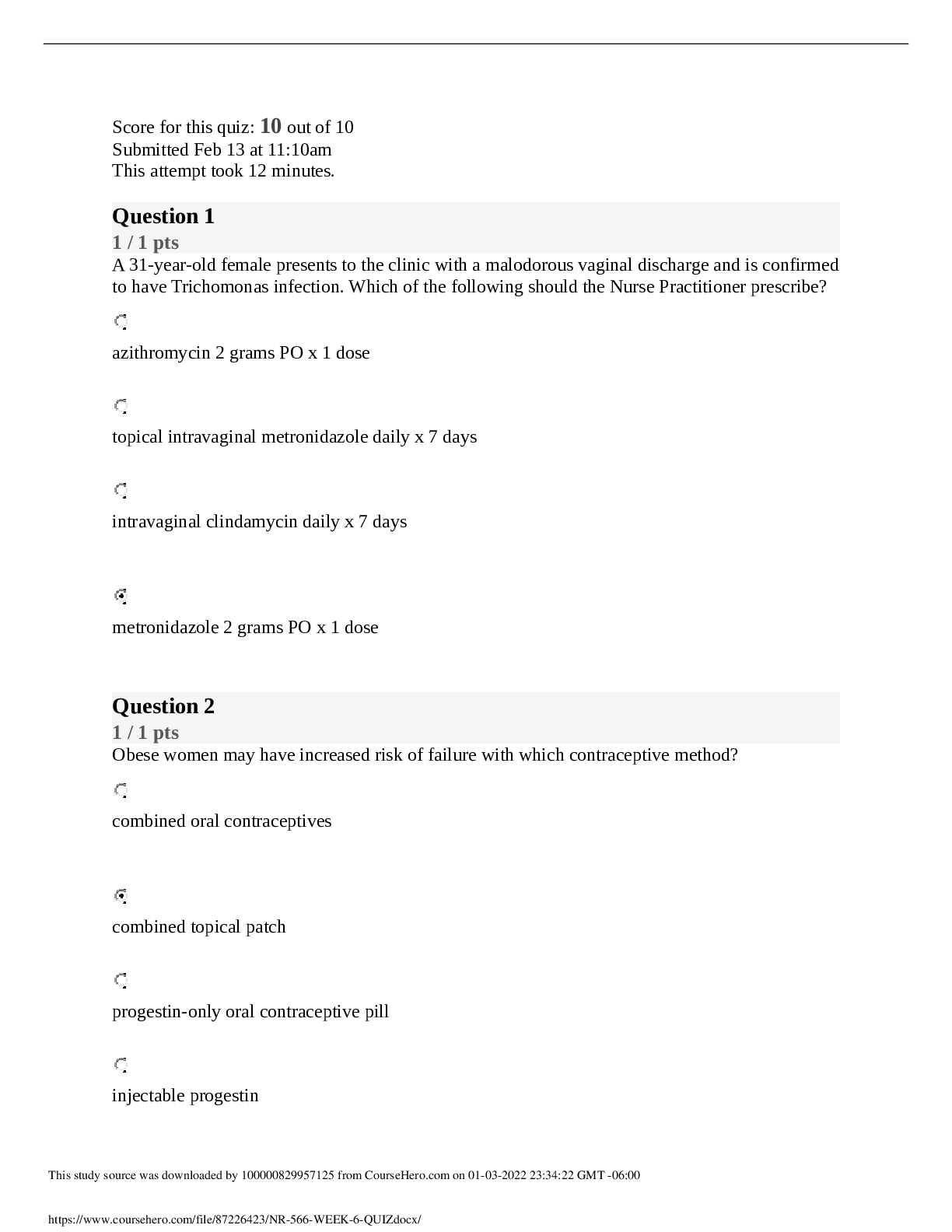

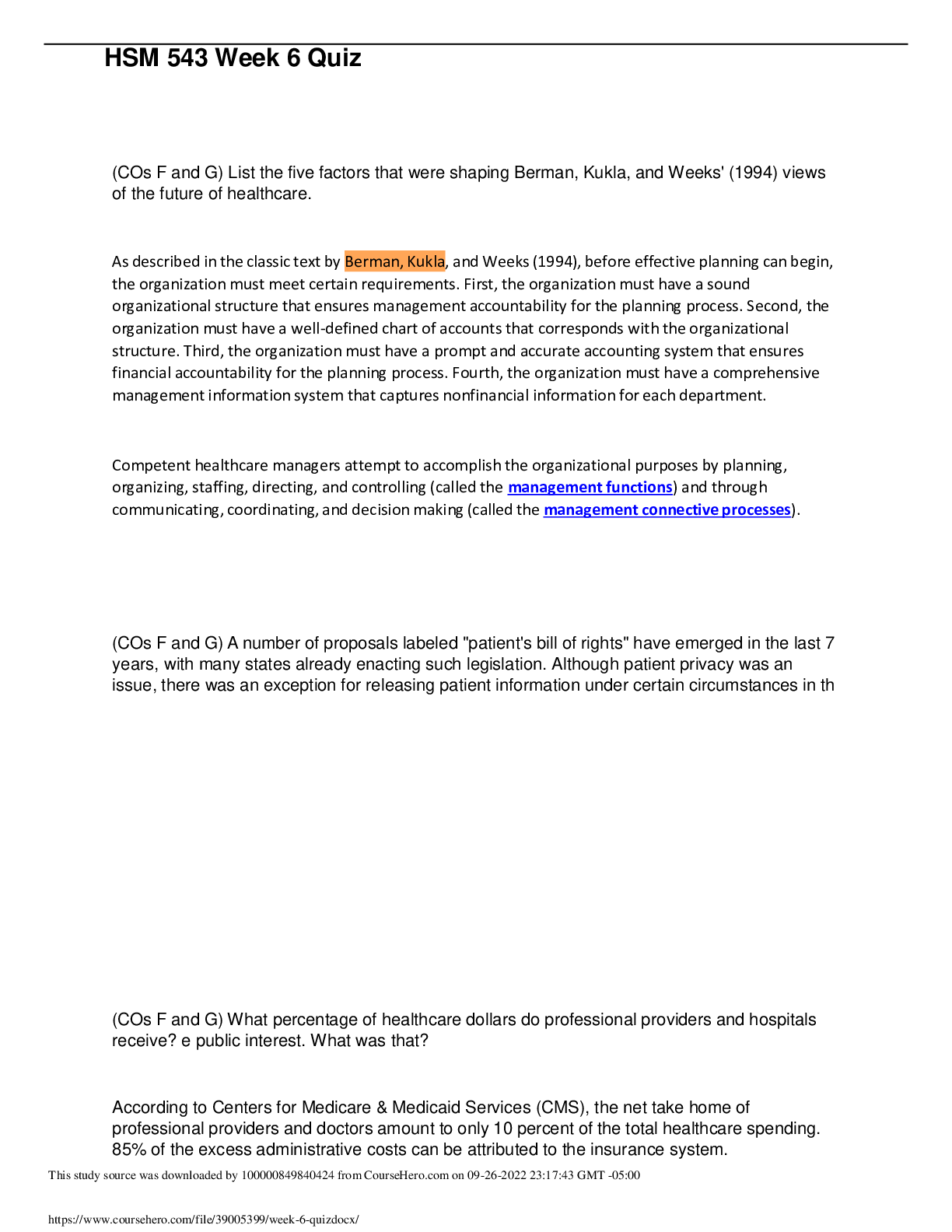
.png)
